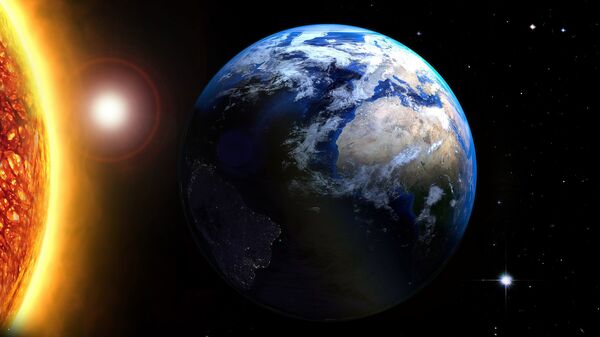Earth's perihelion takes place in early January, as the change in the distance between the two bodies is achieved due to the tilt in the Earth's axis. The Earth's orbit is not a perfect circle, but elliptical.
Perihelion doesn't affect weather conditions, season or temperature on Earth. However, for some social media users it didn't seem to matter, as the phenomenon led to somewhat apocalyptic comments, as well as sarcastic reactions.
Wow the earth is going to be on fire. Hurry build space station so i can finally go where no man has gone before.
— Sweet love (@Sweetlo08965301) January 3, 2019
Is he really?—
— tear in my heart 🌻 (@nicojoons) January 3, 2019
— Ruben Rico (@RubeRico82) January 3, 2019
Because your part of the world is faced away from the sun genius
— 👽 (@BaronBlxck) January 3, 2019
Daniel Brown, Associate Professor in Astronomy and Science Communication School of Science and Technology at the UK's Nottingham Trent University, called the phenomenon a "super sun."
It's here!
— Daniel Brown (@AstroDanNTU) January 3, 2019
This year's SUPER SUN. 😮😮
When it rises it will be appear the biggest this year. 4% larger than in July…
See if you notice it😎…No?
Well so much for the SUPER moon stuff then as well… 😉
Happy perihelion@SophiaCentre@fraumichel1 @FSilva_Archaeo pic.twitter.com/qaxUYgUxFF
According to astronomers, night sky observers will also be able to witness a shower of shooting stars — the Quadrantid meteor shower - which will peak on 4 January 2019.
The Quadrantid Meteor Shower will peak early Friday morning. The time window is very tight for this event, so check it out just after midnight. Look just below the Big Dipper. #Space #Quadrantid pic.twitter.com/OXGIHih8sM
— Andrew Buck Michael (@AndrewWSYX6) January 3, 2019
The International Meteor Organisation (IMO) predicts that the shower will reach its peak at 2h20m UT (2:20am GMT) GMT on 4 January 2019.

